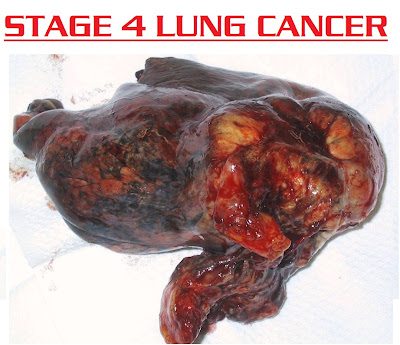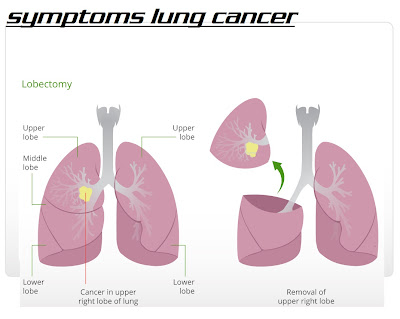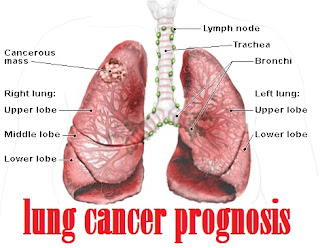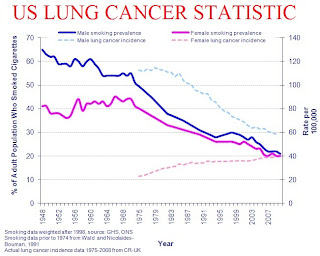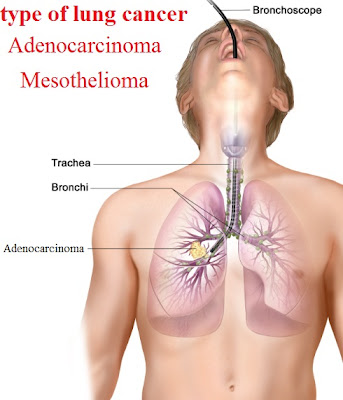types of lung cancer
Adenocarcinoma of the Lung
Up to 50% of non-small cell lung cancers are considered adenocarcinomas. This type of lung cancer is often seen in non-smokers and is the lung cancer type most commonly found in women. Non-small cell lung cancer usually begins in the periphery (outer parts) of the lungs, and it can be present for a long time before it is diagnosed. One form of adenocarcinoma, BAC (bronchioloalveolar carcinoma), appears to be increasing worldwide. BAC is a lung cancer that arises in the small air sacs of the lungs, and it is more likely to affect non-smokers, women, and Asians.
More About Lung Adenocarcinoma
Squamous Cell Carcinoma (Epidermoid Carcinoma)
Thirty percent of non-small cell lung cancers are squamous cell carcinomas. This lung cancer type usually starts in the bronchial tubes in the central part of the lungs and can cause symptoms early on, especially hemoptysis (coughing up blood). Squamous cell carcinoma used to be the most common form of lung cancer, but its incidence appears to have decreased since filtered cigarettes became available and smoke is inhaled more deeply into the lungs (the region where adenocarcinoma begins).
More About Squamous Cell Carcinoma of the Lung
Large Cell Carcinoma
Large cell carcinoma is the least common form of non-small cell lung cancer, responsible for about 10% of cases. It is named for the appearance of large round cells when examined under the microscope. Large cell carcinoma often occurs in the outer regions of the lungs and tends to grow rapidly
More About Large Cell Carcinoma
Small Cell Lung Cancer
Small cell lung cancer accounts for 20% of lung cancers, and it is the lung cancer type linked most strongly with smoking. Small cell lung cancer usually grows in the central areas of the lungs, and most people have few symptoms until just before they are diagnosed. This lung cancer type usually grows and spreads very rapidly, with the majority of people having inoperable cancer at the time of diagnosis. Even though most of these cancers cannot be cured by surgery, small cell lung cancer often responds well to chemotherapy and radiation.
More About Small Cell Lung Cancer
Mesothelioma
Mesothelioma is not actually a cancer that develops in the lungs, but rather begins in the mesothelium, a membrane that surrounds the lungs. Only about 2,000 cases are diagnosed per year in the United States, but the incidence is increasing worldwide. Most cases of mesothelioma are due to exposure to asbestos on the job.
More About Mesothelioma
Lung Carcinoid Tumors (Bronchial Carcinoids
Carcinoid tumors account for up to 5% of lung cancers, but not all lung carcinoid tumors are malignant (cancerous). In contrast to other lung cancer types, carcinoid tumors are usually found in younger people, often people under the age of 40, and are not related to smoking. Most carcinoid tumors grow fairly slowly and can often be removed with surgery.
Secondary Lung Cancer (Metastatic Cancer to the Lungs)
Cancer that has spread to the lungs from other regions of the body, for example the breast, is called secondary lung cancer. In this example, the cancer begins in breast tissue, not lung tissue, and would be referred to as breast cancer metastatic to the lungs, rather than lung cancer.
